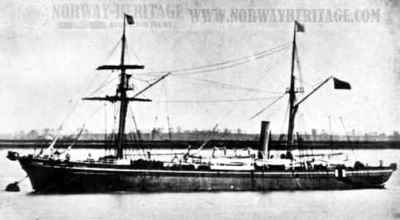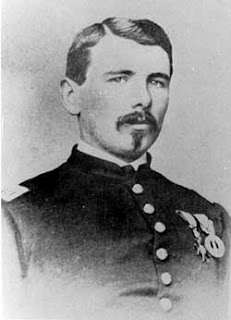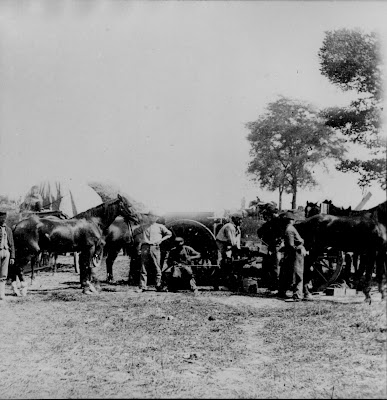Here are the names of the Irish men who fought with the 7th Cavalry and died either during or shortly after the Battle of the Little Bighorn. Their details are displayed in the following format:
NAME - AGE - RANK - COMPANY - COUNTY - OCCUP - PERSONAL DETAILS
Atcheson, Thomas 41 Private F Antrim Unknown 5' 5¼" in height, hazel eyes, dark hair
Barry, John 27 Private I Waterford Laborer 5'7¾" in height, grey eyes, dark hair, ruddy complexion
Boyle, Owen 33 Private E Waterford Soldier 5'6" in height, grey eyes, dark hair, fair complexion
Bruce, Patrick 31 Private F Cork Unknown 5'7" in height, blue eyes, brown hair, ruddy complexion
Bustard, James 30 Sergeant I Donegal Soldier 5'6½" in height, hazel eyes, light hair, fair complexion
Carney, James 33 Private F Westmeath Unknown 5'4¼" in height, grey eyes, black hair, dark complexion
Cashan, William 31 Sergeant L Queen's County Soldier 5'9" in height, blue eyes, brown hair, fair complexion
Connor, Edward 30 Private E Clare Unknown 5'8½" in height, hazel eyes, brown hair, ruddy complexion
Considine, Martin*28 Sergeant G Clare Unknown 5'7½" in height, blue eyes, brown hair, fair complexion
Cooney, David** 28 Private I Cork Laborer 5'5¾" in height, grey eyes, dark hair, fair complexion
(Promoted Sergeant on June 28th)
Downing, Thomas 24 Private I Limerick Laborer 5'8¼" in height, blue eyes, sandy hair, florid complexion
Drinan, James* 23 Private A Cork Laborer 5'7½" in height, grey eyes, light brown hair, dark complexion
Driscoll, Edward 25 Private I Waterford Laborer 5'6" in height, hazel eyes, light hair, light complexion
Egan, Thomas 28 Corporal E Tipperary/Dublin Laborer 5'5½" in height, grey eyes, sandy hair, light complexion
Farrell, Richard 25 Private E Dublin Laborer 5'8¾" in height, grey eyes, brown hair, fair complexion
Finley, Jeremiah 35 Sergeant C Tipperary Laborer 5'7" in height, grey eyes, brown hair, light complexion
(He made Custer's buckskin jacket.)
Golden, Patrick*26 Private D Sligo Slater 5'9¼" in height, blue eyes, brown hair, fair complexion
Graham, Charles 39 Private L Tyrone Unknown 5'6¾" in height, blue eyes, brown hair, florid complexion
Griffin, Patrick 28 Private C Kerry Unknown 5'9" in height, black eyes, dark hair, ruddy complexion
Henderson, John 37 Private E Cork Unknown 5'7¾" in height, grey eyes, light hair, fair complexion
Hughes, Robert H 36 Sergeant K Dublin Unknown 5'9" in height, blue eyes, brown hair, fair complexion
(Carried Custer's battle standard)
Kavanagh, Thomas G 31 Private L Dublin Farmer 5'11¼" in height, grey eyes, red hair, ruddy complexion
Kelly, Patrick 35 Private I Mayo Unknown 5'5" in height, grey eyes, sandy hair, fair complexion
Kenney, Michael 26 1st Sergeant F Galway Soldier 5'7¼" in height, grey eyes, brown hair, fair complexion
Keogh, Myles W 36 Captain I Carlow Soldier The only Irish-born officer, 2nd-in-command to Custer
Mahoney, Bartholomew 30 Private L Cork Teamster 5'10" in height, hazel eyes, dark hair, sallow complexion
Martin, James* 28 Corporal G Kildare Laborer 5'5" in height, grey eyes, brown hair, fair complexion
McElroy, Thomas 31 Trumpeter E Down Musician 5'5½" in height, blue eyes, dark hair, ruddy complexion
McIlhargey, Archibald 31 Private I Antrim Unknown 5'5" in height, brown eyes, black hair, dark complexion
Mitchell, John 34 Private I Galway Unknown 5'6¼" in height, blue eyes, brown hair, ruddy complexion
O'Connell, David 32 Private L Cork Unknown 5'7½" in height, dark eyes, brown hair, ruddy complexion
O'Connor, Patrick 25 Private E Longford Shoemaker 5'5½" in height, blue eyes, light hair, fair complexion
Smith, James 34 Private E Tipperary Unknown 5'6" in height, hazel eyes, brown hair, ruddy complexion
Sullivan, John*25 Private A Dublin Laborer 5'6¼" in height, grey eyes, brown hair, medium complexion
*Killed with Reno battalion
**Died later of wounds received in the battle











































